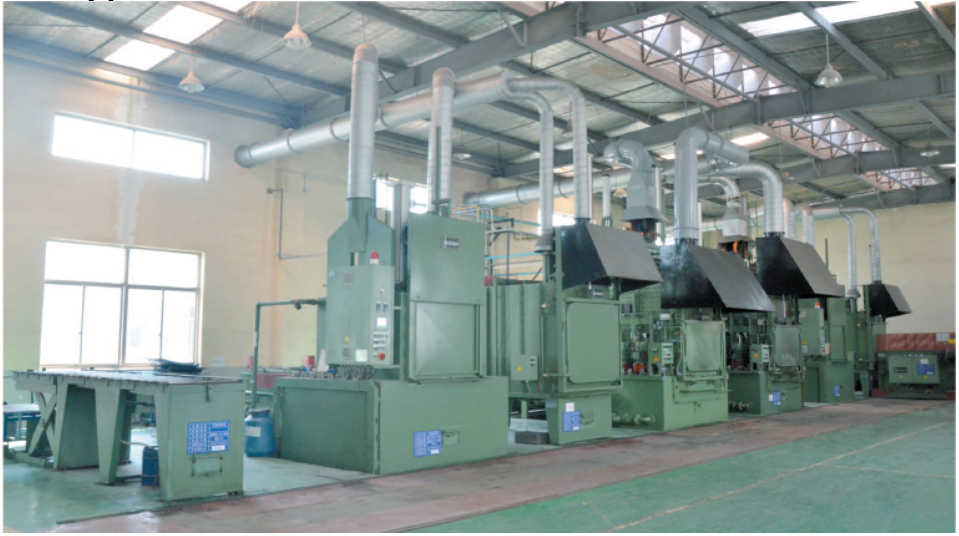Carburizing, Carbonitriding
Carburizing, Carbonitriding
We employ IPSEN’s 4th generation multi-purpose furnace for controllable Carburizing, Carbonitriding, bright quenching, tempering treatment. The oxygen potential in the furnace is continuously monitored with oxygen probes; the concentration in the furnace is analyzed with a CO online analyzer; the carbon concentration is rapidly calculated with a carbon control instrument; variables like thickness of penetration layer are controlled in a real-time manner according to real-time temperature, carbon potential and time; Carb-O-Prof IV can control the distribution of carbon concentration based on the simulation result; the quenching and cooling are automatically completed in the furnace after carburizing. Factors that might affect the cooling quality (including stirring force, direction, time and cooling time) can also be controlled. The treatment process can be designed according to customer requirements to guarantee product quality.
Process performance and application
A layer of carbonitride martensite with high hardness, high strength and high abrasion resistance is formed on the surface after carburization and carburizing permeation treatment while the core of the part remains ductile. Hence, such process is applicable to low, medium and high carbon steel, and low alloy steel. The distribution of carbon concentration in the penetration layer can be easily controlled and adjusted according to different needs. The penetration layer has a good structure, and the depth of the penetration layer can be precisely controlled within a wide range (0.1 ~ 8.0mm). The process is widely applied to wearing parts with certain impact load and other hardware parts of high abrasion resistance and high toughness.
Bright quenching, tempering: the ISPEN’s multi-purpose furnace is used for protective atmosphere heating and quenching of medium carbon steel, and its low alloy steel, carbon tool steel to acquire quenched surface that is similar to the metal, with subsequent tempering at proper temperature to meet the performance requirements of products . Defects during heat treatment, e.g. oxidization, decarbonization, recarburization can be prevented.
Photos of equipment

Examples of products




